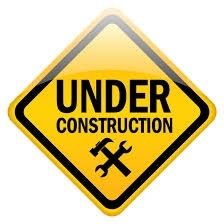Construction Safety Concerns

The construction industry breeds many safety risks that are of concern to employers and OSHA, the U.S. Occupational Safety and Health Administration. Due to the dangerous types of activities performed by construction workers, OSHA provides employers with strict guidelines and safety standards to help preserve the wellness of those who work in construction.
Trenching
Trenching is the process of digging, building or working inside of trenches. Trenches are commonly used in construction to set underground foundations to buildings. Cave-ins, suffocation, drowning and inhalation of toxic fumes are among the most feared hazards associated with trenching. As such, protective systems must be in place and the area must be inspected prior to sending construction workers below ground level. OSHA says that inspections must include the evaluation of soil conditions, testing for low oxygen levels, identifying safe entry and exit routes for workers and a review of the site after rainstorms and other hazard-inducing events, such as earthquakes. It is also important to determine the right placement for spoils, because spoils that are set too close to the excavation site can cause cave-ins.
Ventilation
Construction workers spend a lot of time around sawdust, particles, paint, chemicals and gases. Inhaling such substances can cause irrevocable respiratory damage or lung diseases such as cancer. OSHA's solution to this concern is to ensure adequate ventilation in construction sites and protect workers with respiratory equipment. OSHA's construction standards say ventilating systems must be used to collect dusts, particles, fumes, gases and vapor from the machines and equipment that produce them, and convey them to safe points of disposal. This prevents their dispersion into the atmosphere where employees are working so the air may be cleaner and safer for employees to breathe. For times when ventilation systems are not enough, workers must gear up with personal protective equipment, such as facemasks and respirators. Employers must perform an exposure assessment to determine what type of apparatus to select for workers, since facemasks and respirators come in many forms and provide different levels of protection.
Noise and Hearing
As of 2002, the Electronic Library of Construction Safety and Health says that over one-half of a million construction workers are exposed to hazardous levels of noise in their industry. It is questionable whether OSHA has the proper standards in place to address such hazards. With major noise sources, such as jackhammers, loaders, cranes and dozers, construction workers can suffer from hearing loss if the right precautions are not taken. Additionally, extreme noises heard on construction sites have the ability to mask the sounds of other dangers, such as falling buildings, cave-ins or oncoming vehicles. To prevent ear damage and rupture, workers must wear hearing protective devices (HPDs). Earmuffs and semiaurals are more preferable to earplugs, which are not as easy to put on and take off. Some helmets even have ear shields attached.
Trenching
Trenching is the process of digging, building or working inside of trenches. Trenches are commonly used in construction to set underground foundations to buildings. Cave-ins, suffocation, drowning and inhalation of toxic fumes are among the most feared hazards associated with trenching. As such, protective systems must be in place and the area must be inspected prior to sending construction workers below ground level. OSHA says that inspections must include the evaluation of soil conditions, testing for low oxygen levels, identifying safe entry and exit routes for workers and a review of the site after rainstorms and other hazard-inducing events, such as earthquakes. It is also important to determine the right placement for spoils, because spoils that are set too close to the excavation site can cause cave-ins.
Ventilation
Construction workers spend a lot of time around sawdust, particles, paint, chemicals and gases. Inhaling such substances can cause irrevocable respiratory damage or lung diseases such as cancer. OSHA's solution to this concern is to ensure adequate ventilation in construction sites and protect workers with respiratory equipment. OSHA's construction standards say ventilating systems must be used to collect dusts, particles, fumes, gases and vapor from the machines and equipment that produce them, and convey them to safe points of disposal. This prevents their dispersion into the atmosphere where employees are working so the air may be cleaner and safer for employees to breathe. For times when ventilation systems are not enough, workers must gear up with personal protective equipment, such as facemasks and respirators. Employers must perform an exposure assessment to determine what type of apparatus to select for workers, since facemasks and respirators come in many forms and provide different levels of protection.
Noise and Hearing
As of 2002, the Electronic Library of Construction Safety and Health says that over one-half of a million construction workers are exposed to hazardous levels of noise in their industry. It is questionable whether OSHA has the proper standards in place to address such hazards. With major noise sources, such as jackhammers, loaders, cranes and dozers, construction workers can suffer from hearing loss if the right precautions are not taken. Additionally, extreme noises heard on construction sites have the ability to mask the sounds of other dangers, such as falling buildings, cave-ins or oncoming vehicles. To prevent ear damage and rupture, workers must wear hearing protective devices (HPDs). Earmuffs and semiaurals are more preferable to earplugs, which are not as easy to put on and take off. Some helmets even have ear shields attached.
- nadf873e00807809c76464860f1d469193.jpg
- ps130e8bf19bdc7c2bb53209e5108f0e47.jpg